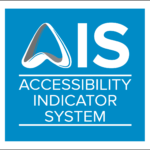In the age of technology and innovation, the smartcity concept has emerged as a solution to improve the quality of life in urban areas. But how can we ensure that these cities are accessible and inclusive for all their inhabitants? A smartcity uses advanced technology and data to manage resources and services efficiently, improve the quality of life of its citizens and reduce environmental impact. This includes everything from the use of sensors to monitor traffic to mobile applications that facilitate interaction between citizens and municipal services. But for a city to be truly smart, it must be inclusive and accessible to all. Accessibility goes beyond simply installing ramps or lifts. It is about designing spaces and services that can be used by all people, regardless of their physical, sensory or cognitive abilities. An accessible city not only benefits people with disabilities, but also the elderly, children… We must not forget that everyone, at some point in their lives, will need accessibility measures and that we all benefit from the creation of more usable and safer cities.
How smartcities can promote accessibility
- Smart Public Transport: Public transport is one of the key areas where technology can improve accessibility. Intelligent transport systems can include buses equipped with automatic ramps and audio systems to announce stops. Mobile apps can provide real-time information on schedules and routes, accessible through screen readers for people with visual impairments.
- Adapted Urban Infrastructure: Smart cities can incorporate sensors and IoT devices to create more accessible infrastructure. For example, smart traffic lights with auditory and tactile signals, pavements equipped with tactile tiles that guide visually impaired people, or guidance systems using mobile apps.
- Smart Buildings: Buildings in a smart city can be designed or adapted to be more accessible through technologies such as smart lifts that are voice-activated and lighting systems that automatically adjust to improve visibility. Automatic doors and accessible toilets are also essential, among many other factors, as it should not be forgotten that accessibility must respond to many requirements, not just technological ones.
- Communication and Citizen Participation: Smart city digital platforms must be inclusive, allowing all citizens to participate in decision-making. Websites and applications must comply with web accessibility guidelines to ensure that people with disabilities can access information and services.
- Health and Wellness: Telemedicine and remote monitoring devices are examples of how smart technologies can improve accessibility to health services. Smart cities can deploy sensor networks to monitor air quality and other environmental factors, thereby protecting the health of all citizens, including those with chronic health conditions.
- Education and Awareness: Smartcities should promote education on the importance of accessibility and foster an inclusive culture. This includes awareness and training programmes for urban designers, software developers and the wider community.
How the AIS certificate can be incorporated
 The AIS 1/2023 Standard has a specific mode of verification of urban environments and IPAs (Accessible Pedestrian Routes) with which AIS consultants or Approved Technicians can analyse the degree of accessibility achieved with a comprehensive vision, taking into account cutting-edge technological solutions and creating an action plan for the implementation of efficient improvements. This modality can be applied both for new developments in the project phase through the Prequalification protocol and in cities or areas already built. In addition, the AIS system has another Standard, the AIS 2/2023, which verifies the degree of accessibility of digital spaces, such as websites and apps, whose use is essential in the development of a smartcity. In short, smartcities represent a unique opportunity to create inclusive and accessible urban environments for all. By integrating accessibility into the design and management of these cities and certifying their progress with AIS, we can ensure that all citizens can enjoy a better quality of life. Technology and innovation, when applied with an inclusive vision, have the power to transform our cities and make them truly smart.
The AIS 1/2023 Standard has a specific mode of verification of urban environments and IPAs (Accessible Pedestrian Routes) with which AIS consultants or Approved Technicians can analyse the degree of accessibility achieved with a comprehensive vision, taking into account cutting-edge technological solutions and creating an action plan for the implementation of efficient improvements. This modality can be applied both for new developments in the project phase through the Prequalification protocol and in cities or areas already built. In addition, the AIS system has another Standard, the AIS 2/2023, which verifies the degree of accessibility of digital spaces, such as websites and apps, whose use is essential in the development of a smartcity. In short, smartcities represent a unique opportunity to create inclusive and accessible urban environments for all. By integrating accessibility into the design and management of these cities and certifying their progress with AIS, we can ensure that all citizens can enjoy a better quality of life. Technology and innovation, when applied with an inclusive vision, have the power to transform our cities and make them truly smart.

